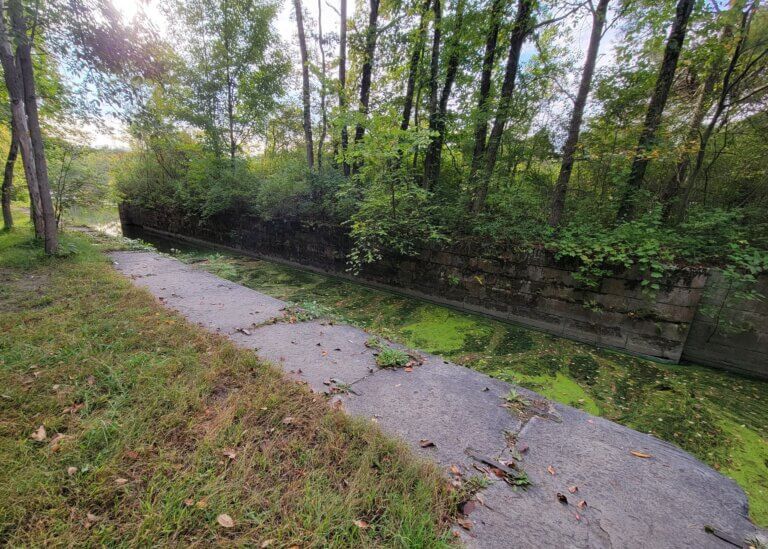GUARD LOCK 2
- Program
- Subject
- Location
- Lat/Long
- Grant Recipient
-
Historic Transportation Canals
-
Industry & Commerce, Site, Transportation
- Tow Path (yellow), Fulton, NY 13069, USA
- 43.26169193478, -76.365962754655
-
Town of Volney
GUARD LOCK 2
Inscription
GUARD LOCK 2MANAGED OSWEGO CANAL
WATER LEVELS. OPENED 1828,
CANAL ALLOWED BOATS TO
TRAVEL BETWEEN ERIE CANAL
IN SYRACUSE AND LAKE ONTARIO.
WILLIAM G. POMEROY FOUNDATION 2022
Located amid the hiking trails of Great Bear Springs Recreation Area in Fulton, New York sits the historic remnants of Guard Lock 2, which managed water levels on the Oswego Canal during times of flooding. The lock is accessible on foot by taking the River’s Landing Loop, which will bring visitors directly to its location. Additionally, the lock is accessible by water, and kayakers and canoers can paddle through the historic structure that allowed the Oswego Canal to operate efficiently. As of 2022, designated lots for parking remain free and open to the public, and the path to the lock remains maintained by a dedicated volunteer crew.
Following the initial completion of the Erie Canal, the primary function of which was east to west development, expansion and transportation in the state, the possibility of connecting a waterway to Lake Ontario and further trade in the North spurred canal builders to look for an appropriate port town to connect to the Erie Canal. Oswego was selected, and in 1825 funds were allotted to construct the lateral Oswego Canal. Not long after, digging and building commenced with the goal of creating an all water-link connecting the Erie Canal in Syracuse to Lake Ontario.
Construction of the Oswego Canal proved difficult and the work was hindered by an illness that swept through the crew; however, in 1828 the work was finished enough to allow water in, with boats passing along the new waterway that year. The original Oswego Canal consisted of a number of dams, locks, guard locks and towpaths, utilizing the Oswego River to power the new transportation route that opened up northern trade through the Great Lake.
During the early construction a dam—the horseshoe dam—cut across the Oswego River near the site of an early guard lock that would be replaced by Guard Lock 2 circa 1858 as several canals throughout the state were enlarged. The purpose of guard locks were different than typical lift locks used to raise or lower boats on a canal; instead, guard locks typically remained open, allowing boats and water through without stoppage save for times of high water when their doors would close to prevent canals from flooding and washing out, while allowing the boats already on the canal to continue their journey.
In the early 20th century the Oswego Canal became part of the Barge Canal improvements, which would canalize the Oswego River, making Guard Lock 2 no longer necessary. Today, visitors can hike or paddle to the older 19th century remnants of Guard Lock 2 and appreciate an important part of canal transportation history.



